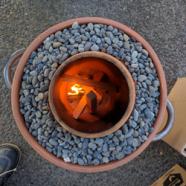Student outcomes: A tandoor oven for kebabs
This resource gives an example of high quality student outcomes and describes key aspects of the project.
Zac and Chad's outcome | The brief – tandoor oven | Modelling and construction
Zac and Chad's outcome
Zac's kebabs
Year 13 food technology student, Zac Chhour, was focusing on developing entrees – in particular, kebabs.
Zac's teacher mentioned that some of her favourite were chicken tandoori kebabs cooked in a tandoor oven.
Zac was encouraged to investigate whether he could make his own tandoor oven. He found it was relatively easy to make one using several terracotta pots and insulating material.
Chad's tandoor oven
Year 12 student Chad Ockerse offered to construct the oven for Zac's kebabs.
Chad had made a DIY Tandoor at home, having seen one at the Indian restaurant where he worked.
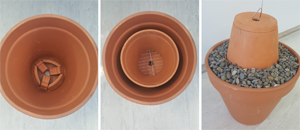
“Once we develop good relationships with students they feel that they can tell you about their passions and share their experiences, skills, and knowledge from their workplace or outside of school without hesitation.”
Ritu Sehji
The kebabs were highly successful.
The brief – Tandoor oven
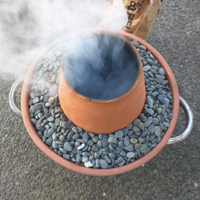
- Generally made from clay and insulated with concrete on the outside.
- The oven is cylindrical, narrowing at the top to allow for heat to concentrate.
- A fire is lit in the bottom and then allowed to die down to hot coals.
- Tandoor ovens reach high temperatures (up to 480C) and cook food quickly. Once heated, they maintain their temperatures with very little additional fuel – a great advantage in countries where fuel is a scarce resource.
- Kebabs and flatbreads such as naan or roti are cooked in the traditional ovens. Flatbreads are thrown against the interior side of the oven; kebabs rest in the coals or are hung in the oven.
- The ovens are common cooking equipment used throughout the Middle East, India, Pakistan, and even parts of Central Asia and China.
Modelling and construction
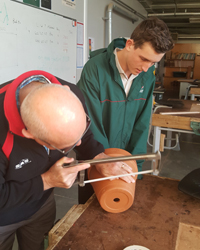
Three different sized terracotta pots and stones (used for insulation) were purchased from a local hardware store.
The base of the smaller top pot was sawn off. Chad enlisted the help of the workshop teacher for a method to cut the terracotta without breaking the pot. They used a hacksaw initially, but found an angle grinder gave a cleaner finish.
Small stones were used for insulation between the inner and outer pot. There are different opinions on what is the best insulating material in a terracotta pot Tandoor oven. Sand and vermiculite are also used. Insulating material needs to keep the heat in the oven rather than heat up itself.
Kindling wood was used to make the hot coals.
Cooking in the Tandoor oven
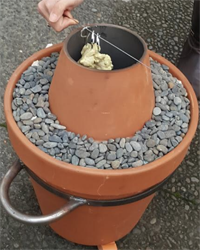
- Kebabs were threaded onto metal skewers and hung from a skewer on the top pot. The lid was placed on this.
- Small feet were placed under the inside pot for support and to allow the air to flow freely up through the hot coals. The feet were also used to lift the pot off the ground to ensure air circulated through the bottom of the pot.
- Chad made a small wireframe to go over the coals in the bottom of the oven so hot coals stayed in the pot and did not fall through the hole. He also constructed a metal frame with handles for the outside pot, to move the hot oven easily to a safe place away from students.
- A metal kebab stick was placed across the top pot with the lid removed. The kebabs were then hung from another metal skewer.

